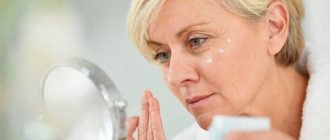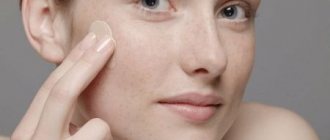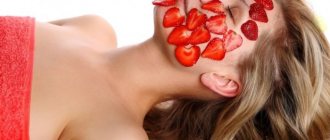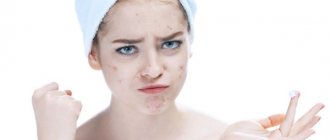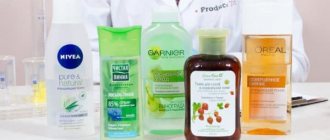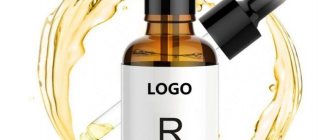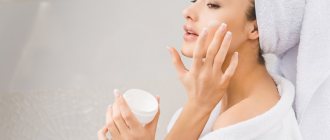It is important for those with problematic skin to know that non-comedogenic cosmetics are not only intended to disguise acne. It is part of the treatment and care of such dermis. The term "non-comedogenic" comes from the word "comedone", which in medical parlance means open and closed acne. Cosmetics specially developed against acne allow you to properly cleanse and care for your face. It is also important to choose the right decorative cosmetics that do not clog pores or create a film on the face, but promote dermal respiration.
Causes of comedones
And so, comedones. Considering these formations from a medical point of view, we find such information. This is a type of cyst that is formed due to blockage of the mouth of the hair follicle. The process involves keratinized epithelial particles mixed with sebum.
Among the reasons for the appearance of comedones are:
- genetic predisposition. That is, education can be “passed on by inheritance”, regardless of gender;
- hormonal imbalances. This phenomenon is often noted during adolescence and pregnancy;
- nervous disorders. These are frequent stresses, psychological overloads, leading to malfunctions of the entire system;
- chronic diseases of internal organs;
- endocrine pathologies;
- nutrition – eating large amounts of fatty foods, baked goods, sweets;
- bad habits (smoking, drinking alcohol);
- excessive exposure to solar radiation - intense tanning in summer, visiting a solarium in the cold season;
- inappropriate or low-quality cosmetics. Products containing vegetable oils can clog pores.
In some sources you can find a mention that comedones are non-inflammatory acne. This is not entirely true. The skin may be speckled with whiteheads and blackheads. Black ones are open and can be easily removed to the surface. White ones are closed. This area is often inflamed.
Comedogenic effect – what is it?
Many factors can provoke the appearance of new comedones. Unpleasant formations on the skin of the face can have two types: open and closed. The first includes deep pimples with a white head, the second includes acne located on the outer surface. Non-comedogenic cosmetics are designed to combat the appearance of all types of formations resulting from clogged pores. It does not contain components that promote the development of comedones.
It is believed that if you do not properly care for your face or ignore cosmetic procedures, acne and clogged pores eventually lead to massive lesions in the form of pimples, which are much more difficult to remove than external open comedones. Acne appears as a result of incorrectly selected cosmetics. The comedogenic effect is the result of using such products. The pores of the dermal layer become clogged due to the presence of components in the caring and decorative product that are classified as comedogenic, that is, they provoke the appearance of acne.
However, not everyone develops clogged pores. Dermatologists say a lot depends on the type of skin and the individual characteristics of the body. If a person does not have chronic diseases of the skin or gastrointestinal tract, and eats properly, then, most likely, even with oily skin, acne will appear later than for someone else who suffers from ailments and does not pay attention to their diet and facial skin condition.
People with oily and problematic facial skin are most often susceptible to the comedogenic effect. Pollution and clogging of pores occurs much faster than in representatives of the dry or combined type. When purchasing a cosmetic product, always check with your sales consultant whether it is comedogenic. If the answer is yes, it is better to refuse such a purchase if you have oily or problematic facial skin.
What's included
The composition of the foundation that prevents the appearance of comedones includes at least one ingredient from the list.
Salicylic acid
Non-comedogenic foundation with salicylic acid performs two functions at the same time - masks imperfections and gently heals the skin. The keratolytic properties of salicylic acid allow you to soften and exfoliate the stratum corneum of the epidermis, carefully dissolve plugs in hair follicles and destroy bacteria that cause inflammation.
Benzoyl peroxide
Reduces skin oiliness and protects pores from bacteria. Not suitable for hypersensitive skin - in 20% of cases it leads to irritation.
This ingredient is often found in cosmetics for problem skin. Sulfur helps cleanse the face of excess sebum and keratinized epithelium.
Plant extracts
Sebum-regulating plant extracts reduce the production of sebum; in the foundation, this can be an extract of yeast, willow bark, seaweed, witch hazel, aloe, and so on.
Special oils
Employees of the American Academy of Dermatology tested various oils for comedogenicity and are safe from this point of view:
- sunflower oil;
- Shea Butter;
- hemp oil;
- mineral oils;
- cosmetic Vaseline;
- safflower oil.
Castor oil and lanolin do not contribute to the development of comedones. For a complete table on the comedogenicity of essential and cosmetic oils, follow the link.
Rating of care products
You can find quite a lot of products on the market labeled “non-comedogenic.” Most often these are facial care lines and foundations. However, you should not blindly trust the labels - before you buy a product, you need to analyze the composition and check whether it contains the following components:
- lanolin type alcohol;
- fatty acid;
- chemical dyes;
- oleic acid;
- petrolatum;
- oils
All of the listed components are comedogenic and should not be in the composition. After all, they are the ones who negatively affect the condition of the pores, clog them, provoking the appearance of various types of rashes. Among the substances that must be included in non-comedogenic products are the following:
- salicyl in the form of acid;
- benzoyl peroxide;
- sulfur;
- zinc;
- hyaluron;
- plant extracts, such as green tea, calendula, chamomile;
- allantoin.
All these components give cosmetics the following properties:
- cleansing pores;
- healing of wounds and inflammations;
- moisture retention;
- removal of fat;
- regulation of the glands;
- the pores remain unclogged.
A properly selected product will delicately care for facial skin, eliminating defects and preventing their occurrence. The texture of such creams is light, melting, they are perfectly absorbed, and there is no greasy shine after application. Foundations for oily and combination skin should also allow the skin to breathe freely.
The modern market of cosmetic products allows you to choose a non-comedogenic cream for any budget.
La Roche-Posay Effaclar MAT:
- medicinal emulsion;
- moisturizes and mattifies;
- regulates sebum production;
- indicated for oily skin;
- can be used by men and women;
- contains a pigment-constricting complex of higher quality than standard zinc;
- goes well with foundation.
H2O Magic Moist Holy Land:
- serum-gel for mixed skin types;
- transparent, liquid;
- contains extracts from plants;
- There are no fats of vegetable or animal origin.
Noreva Laboratoires Exfoliac:
- moisturizing cream;
- indicated for oily, problem skin;
- contains bisabolol, hyaluron, algae extracts;
- contains controversial components from the point of view of comedogenicity: shea butter, beeswax.
“Oxygen balance”, Faberlic:
- day cream;
- moisturizes well, mattifies well;
- contains an oxygen complex, antioxidants;
- goes well under makeup;
- There may be a feeling of skin tightening.
The benefits and effectiveness of non-comedogenic face cream
A non-comedogenic facial moisturizer is a product that does what it claims to do without clogging your pores. Any product can be considered such if it is ideally selected according to individual indicators.
You can take care of a person with problem skin using fluids, serums, and light-textured creams. But you should not advise your friends to use caring cosmetics that suit you. Only your own experience will show whether the remedy is effective.
Properties of non-comedogenic creams:
- moisturizes, nourishes, improves oxygen transport into cells;
- helps cope with skin imperfections;
- effective in caring for oily skin prone to rashes;
- has a beneficial effect on the combined epidermis;
- eliminates oiliness by normalizing the functioning of the sebaceous glands, but does not inhibit their functioning;
- has a mattifying effect.
Please pay attention! Only a specialist can help you choose a good cream. It is necessary to find the cause of comedones. If there are internal pathologies, then external means will not give results. In this case, you may need medication to treat the underlying problem.
List of the best products
Let's look at the list of the most popular non-comedogenic skin care products, the cost of which varies widely. You can choose an effective cream regardless of your available budget.
La Roche-Posay Effaclar MAT
Emulsion with a mattifying, moisturizing, sebum-regulating effect. The manufacturer positions it as a treatment for sensitive, oily skin. La Roche Posay cream is suitable for men and women. The unique Sebulyse complex is responsible for narrowing pores and imparting matteness. As a base for makeup, the cream is not suitable for everyone; in the winter season it does not moisturize effectively enough.
Volume – 50 ml, price about 1100 rubles.
Noreva Laboratoires Exfoliac
Active restoration for problematic, oily skin types. The composition contains biasbolol, shea butter, linoleic acid, marine proteobacteria (extract), hyaluronic acid. Due to the presence of beeswax, the product may clog pores. Price for 50 ml is about 400 rubles.
Lumene Arctic Aqua
The cream softens, restores elasticity, nourishes, moisturizes, increases protective properties, and strengthens. The main component is the purest water of Arctic springs with potassium, sodium, magnesium. The product retains moisture well and prevents dehydration. Price 50 ml – 260 rubles.
Liv Delano
Mattifying moisturizer without parabens and other harmful substances. It does not cause comedones, so it is suitable for the most delicate skin. Contains zinc and ginger root.
A small green jar costs 140 rubles.
Avene SPF50
Quite an unusual cream in terms of its effects. It creates a protective shield on the skin with a mineral composition that protects against the effects of negative UV radiation. The product is not an anti-tanner, but it does a good job of preventing photoaging. Accordingly, the cream is suitable for skin prone to rashes in the summer. Despite the high quality and well-known brand, its price is affordable - about 400 rubles for 50 ml.
Eucerin DermoPurifyer Adjunctive Hydrating Care
Moisturizing formula with SPF30 protection factor. The cream stops the negative effects of sunlight, protects the skin, and normalizes oiliness. Additionally, it contains specific substances that restore normal lipid balance. Reviews about the cream are good, the price is above average - about 560 rubles for 50 ml.
Cream-gel Pureness from Shiseido
A good moisturizing formula for normal to combination skin prone to various blemishes. Softens, refreshes, restores, eliminates dryness, peeling, wrinkles. The formula attracts moisture and retains it in the cells. The cream contains a unique complex with azul extract, a plant component that moisturizes and regenerates the epidermis. Benzoic acid has a bactericidal effect; it takes water from the air into glycerin.
Price 40 ml – approximately 600 rubles.
A high price is not always synonymous with the same high quality. Before making your final choice, we recommend reading reviews of different products - they can help you choose the best option.
We also recommend that you read more about moisturizers for oily skin here.
Light emulsions are easily absorbed, so it is recommended to distribute them as quickly as possible. They will not give you deep nutrition - this function is performed by a more concentrated night cream.
Clinical Trials
This term means that the product has been tested for safety and effectiveness according to strict scientific standards.
Promises that the cream smooths out wrinkles and that mascara lasts 30% longer than popular analogues are confirmed by laboratory tests. Although no one can say with one hundred percent certainty that the results of such studies are always honest and guard consumer interests, the “clinically tested” mark on the packaging most often indicates the high quality of the product.
How to find out if clinical trials have been conducted
Detailed information about clinical trials can be found on the company's website or on the information insert in the packaging of the product.
Who needs clinically tested cosmetics?
For those who believe in science and want at least some guarantees that the product will have the effect promised by the manufacturer.
Recommendations from cosmetologists
Let’s take it as a fact that you are somatically healthy. Then external imperfections can be corrected using non-comedogenic creams for problem skin. But cosmetologists give a whole range of advice. Their implementation along with the use of cosmetics guarantees a good result.
- Proper washing. The procedure should be carried out twice a day - morning and evening. For this purpose, use not ordinary toilet soap, but cosmetic soap. You can choose foam or gel with a cleansing effect. These products do not irritate the skin. The water should be warm or cool. Hot liquid stimulates the sebaceous glands. If you have enlarged pores, it is better to wash your face with cold water and then wipe your face with a piece of ice. Dry with a cotton towel. There is no need to rub vigorously, just blot the surface.
- UV radiation. Before going outside, apply a protective product to your face. If your skin is prone to irritation, redness, and pigmentation, you can use sunscreen. Limit visits to the solarium to a minimum. Do not use cosmetic products containing alcohol.
- Nutrition, exercise. You need to start with facial gymnastics. Simple exercises will help restore blood supply, increase skin elasticity, and prevent the appearance of wrinkles. Active recreation, walks in the fresh air, and sports will have a positive effect on the entire body. The diet must include fresh vegetables and fruits, cereals, meat, and fish. Avoid pickles, smoked foods, too fatty foods, excessive amounts of sweets, and rich pastries.
- Cosmetics. Passion for foundations and powder leads to clogged pores. As a result, acne, irritation, and other defects appear. Two to three times a week you need to use scrubs or peeling compositions. This will help get rid of keratinized epithelium and cleanse the pores. If there are inflamed areas, purulent pimples, or cracks on the face, it is better to use lotions with antibacterial, astringent, and softening effects.
- "No hands!" Do not touch your face with dirty hands, do not rub or scratch. Pathogenic microorganisms can get into microcracks. Under no circumstances should you squeeze out any pimples yourself or pierce the skin at the site of formation. This can cause infection and intensify inflammatory processes.
Now is the time to move on to the rules for choosing the best remedy.
Find out how to choose a moisturizer for problem skin:
What products can clog pores?
Speaking about the comedogenic effect, it is worth paying attention to cosmetic products that clog pores. Information about them is sometimes difficult to find, so many women do not know what to look for in the composition when buying a new product, as well as which substances and products can cause an adverse effect.
Comedogenic substances in cosmetics include:
- lanolin alcohol (often used in facial skin care products);
- fatty acids (they can be recognized by the specific ending - pil, - tat, for example, myristate, isopropyl, etc.);
- all non-natural dyes, they are sometimes used in eye shadows, creams, masks;
- almost 80% of facial foundations and foundations contain a composition that adversely affects the condition of pores;
- hand creams, shampoos, shower gels, hair conditioners, it would seem, do not belong to face care products, but they get on the skin of the face in small quantities when used (the composition of these cosmetics often leaves much to be desired);
- blushes and bronzers of a red or pink hue often cause a comedogenic effect;
- peach, soybean, sweet almond oil;
- grape seed oil;
- oleic acid and alcohol.
The right choice of cosmetics contributes to healthy facial skin.
Dermatologists advise choosing more expensive products that position themselves as non-comedogenic. Comedogenic substances in cosmetics can have a detrimental effect on the appearance of the face, cause the frequent appearance of acne and pimples, and stimulate the development of inflammatory processes.
Types of natural oils
In cosmetology and the medical industry, essential and fatty oils are distinguished. The latter are divided into active and basic. They may have the same names, so it is very important to know how to obtain them. Essential oils are obtained not by extraction, but by distillation. They are used drop by drop, limited to aromatherapy. You can, however, add them to others in a ratio of 1:30, that is, for one drop of essential oil – thirty drops of base oil.
The characteristics of active oils are reflected in their name. They react and contain many vitamins and other substances. They are mixed with the base ones for use, because without this they can ruin the skin.
Base oils are not dangerous to use. They are similar to the natural secretion of the skin of a healthy person and are the basis of cosmetic products. They are obtained by pressing and mixed with each other, which in no case should be done for active oils. Basic non-comedogenic facial oils that are well suited for oily skin are hemp or rosehip seed.
It should be noted that there is another division: refined and unrefined. For care, it is better to choose purified, refined ones, since in this case the risk of allergies is minimized.
Products for moisturizing problematic skin
Often, problematic skin suffers from a lack of moisture and flakes. This is due to a violation of water-lipid metabolism and the peculiarities of caring for such dermis. Incorrectly selected facial care cosmetics, such as cleansing soaps, dermatological treatment creams, and decorative concealers, often aggravate the problem. Thus, oily, problematic, inflamed epidermis needs hydration more than any other. Adequate hydration is not an addition, but a necessary condition for treating acne.
Pharmacy creams
Dehydrated dermis is unable to perform its barrier function. The line of any medicinal cosmetics for problem skin includes a moisturizer. The best of the companies, customer reviews and opinions on forums, are the French brands Bioderma, Uriage, Noreva, Vichy, Ducray. But even these pharmacy creams are not suitable for everyone, losing to professional products.
They suffer from one significant drawback. The fact is that they are based on petroleum products and animal fats. The components of petroleum products on packaging are usually indicated as follows:
- mineral oils;
- butylene glycol;
- propylene glycol;
- dimethicone;
- petrolatum.
Animal fats include stearic, palmitic acids, and lanolin. All of the listed oils and fats form a dense film on the surface of the epidermis, making breathing difficult and clogging pores. This non-comedogenic face cream can lead to inflammation. These components in the products of the French brands Vichy, Ducray, La Roche-Posay come immediately after water, which means they are their basis and act actively, dissolving sebum. In this case, the water-lipid mantle is damaged. The situation is best with the companies Bioderma, Uriage, Noreva.
Professional cosmetics
Non-comedogenic luxury cosmetics are distinguished by light textures and low concentrations of petroleum products and fats. They are based on vegetable oils and emulsifiers that are friendly to problem skin and do not interfere with tissue respiration. The list of caring components of professional products is much wider and more interesting.
You can achieve good results with any professional cosmetics. Price or brand rating is not always the determining factor. A cosmetologist will select home care using professional products. Products suitable for sensitive and problematic dermis that work at home include:
- Creams, serums, and gels from Kosmoteros, jointly produced between Russia and France, contain hyaluronic acid and an inflammation inhibitor. They soothe any dermis, not only those that are problematic after peeling, cleansing, or sunburn.
- The Limani brand, similar to the previous one, ideally moisturizes and tones the epidermis at half the price.
- Collagene 3D contains facial oil, vitamins, healing components, panthenol, lecithin. Provides a hydrolipid barrier for damaged epidermis.
- The Russian company Alpika creates products based on plant extracts, vitamins, and hyaluronic acid, which are relevant for young, problematic dermis.
- The domestic brand Arcadia has developed comprehensive care for problem skin at any age. The products in this line have different consistencies and are suitable for any type of skin prone to rashes.
Non-comedogenic moisturizer can be enriched with active ingredients:
- gray;
- salicylic acid;
- benzoyl peroxide.
Sulfur removes sebum and dead scales, and also slightly whitens the epidermis. You should not be afraid of the specific smell of the ingredient, since in the composition of a cosmetic product it mixes with others, becoming invisible. Salicylic acid has solvent properties, so it helps eliminate sebum, dead cells, and pore contaminants. Benzoyl peroxide is an antibacterial component. Unlike the previous two, it fights acne bacteria, but can cause severe irritation and dryness of the epidermis. It is used in combination with hydrocream, gel or as part of a product with a compensating effect.
Compatibility of the cream with your skin
As we have already mentioned, whether the cream will have a comedogenic or non-comedogenic effect on your face, only you can determine for yourself. In cosmetic stores, the choice of products is huge. However, the choice of means should be carried out according to the following rules:
- Look for the label “non-comedogenic” on the packaging. In this way, manufacturers simplify the search process for us;
- be sure to take into account your skin type and age. Performance depends on this;
- read the ingredients carefully. It should not contain saturated fats, which are not able to penetrate into the epidermal cells. In addition, such substances create a film on the surface and clog pores;
- the texture is light and delicate. To check this, use the tester. Apply a small amount of cream to your wrist and monitor the absorption time. Pay attention to whether there is a sticky residue left;
- The moisturizer should contain a sufficient amount of hyaluronic acid (not plain water or other structured liquid!).
Also pay attention to the presence of vegetable oils. It's better if they don't exist at all. Essential oils are welcome, but not all.
List of brands of non-comedogenic cosmetics
Ten years ago, it was possible to count the brands of non-comedogenic cosmetics on the fingers of one hand. Today, women and men have a relatively wide selection of products to help prevent clogged pores. In beauty salons or on the Internet, it is possible to purchase products that do not contain harmful components that are classified as comedogenic. The following brands will help become a preventative against acne and pimples:
- L'Oreal Alliance Perfect presents a line of non-comedogenic cosmetics. The brand offers not only care products, but also decorative ones. It is possible to purchase foundation and nourishing creams without harmful ingredients.
- Lumene is very popular among young people. It produces a series of cosmetic products that help keep facial skin healthy and take care of it without regard to the negative consequences. The brand has many positive reviews online.
- Bourjois. Not as popular as the previous manufacturer, but also having its fans. Produces a line of non-comedogenic products with decorative and caring properties.
- Dior is more expensive and high-quality cosmetics that allow you to take care of your appearance and not think about acne and pimples. The line includes products for gentle skin care and decorative cosmetics. The cost of products varies from 500 to 5000 rubles.
- Shiseido. The only representative of Japanese cosmetics. Unlike all of the above manufacturers from France. Expensive, but high-quality and natural cosmetics. The cost of products can start from 1,500 rubles and exceed 10,000. The brand has positive reviews online and is considered one of the best.
- Vichy is a well-known brand that positions itself as non-comedogenic. The products include products that help keep skin healthy and youthful. There is a line of decorative cosmetics. For many years it has been considered popular as a brand that helps take care of problem skin.
Today, this type of safe cosmetics is no longer in short supply and can delight every woman. Most of the above products can be purchased at beauty salons or pharmacy chains.
Do not forget that cosmetics alone are not capable of completely freeing a person from the onslaught of comedones. Any dermatologist and cosmetologist will tell you that a lot depends on a person’s lifestyle, his preferences and general health. The use of non-comedogenic cosmetics can be useless if you do not monitor your diet, abuse bad habits and do not treat diseases in time.
oils
The list of non-comedogenic oils is headed by a representative of the zero index and a high percentage of linoleic acid - safflower, which is considered ideal for problem skin.
The second place rightfully goes to primrose oil - it has the second level, and the content of linoleic acid is almost the same. It can treat acne caused by increased hormonal levels.
In third place is grape seed oil, which also has the second level of comedogenicity. There is less linoleic acid in it than in the previous one, but only by 4 percent.
Fourth place was taken by sunflower oil, accessible to everyone, for its zero level of comedogenicity and almost seventy percent linoleic acid. This is a good non-comedogenic oil for oily skin. Some consider it very similar to safflower.
The best oils for combination skin
Oils for mixed skin types are rated from 0 to 2 on a scale of undesirable effects, combat dryness and age-related changes.
Shea Butter
Shea butter is zero comedogenic. Due to the content of oleic and steric acids in the oil, it deeply nourishes and moisturizes the skin. With regular use of the oil, processes of skin renewal and restoration are observed, the oval of the face becomes clearer, and wrinkles are smoothed out.
Shea butter is also useful in combating stretch marks and skin conditions such as eczema and psoriasis. Shea butter will soften skin roughened by frost and wind and protect from aggressive sun rays.
Shea butter is one of the most famous and effective non-comedogenic skin care products for dry and aging skin.
The consistency of the oil is quite thick. Unrefined shea butter has a creamy hue and a light nutty aroma, while the refined product is white in color and does not have a pronounced odor.
Sea buckthorn oil
Non-comedogenic facial oils, including sea buckthorn, have nourishing and smoothing properties. Sea buckthorn oil increases skin turgor, softens it and evens out complexion. This effect is due to the content of vitamins A and E in the oil, as well as palmitoleic acid (omega-7).
The oil also contains amino acids and linoleic acid. Sea buckthorn oil is effective in the fight against freckles, age spots and acne. You can make masks based on sea buckthorn oil, mix it with other oils, or simply apply to cleansed facial skin for 30 minutes.
The oil has an intense orange color and a viscous, slightly sticky consistency.
Rosehip oil
The product is suitable for aging skin. The oil contains fatty acids, vitamin E and C. The oil promotes cell regeneration and skin rejuvenation. The likelihood of acne from rosehip oil is minimal - the product has zero comedogenicity. The product also has a moisturizing and anti-inflammatory effect.
Regular use of rosehip oil makes the skin elastic and smooth, which is due to the content of copper, magnesium and phosphorus in the oil. Rosehip oil is used for dry, sagging skin, unhealthy complexion, and wrinkles. The product is recommended for use after reaching 30 years of age; it is not suitable for oily skin.
The oil is a liquid product with a yellowish-red tint.
Apricot kernel oil
The product has a low level of comedogenicity (1-2). Apricot kernel oil is suitable for skin prone to dryness, flaking, and irritation. The product will also smooth out wrinkles and make the oval of the face clearer.
The product can serve as a substitute for a thick night cream (use after applying the serum). In addition to vitamins A and E, which are traditional for oils, the product contains a rather rare vitamin F, which nourishes the skin and increases its elasticity. The oil promotes the healing of cracks and protects from sun rays.
The product has a delicate almond aroma and a subtle golden hue, the consistency of the oil is liquid and viscous.
Why is the cream not suitable?
In cosmetics, non-comedogenic face cream occupies a special place. The product should be easy to apply, quickly absorbed, and not leave a sticky feeling. Even an experienced cosmetologist cannot say why the cream is not suitable. It is better to pay attention to such manifestations that indicate the wrong choice of product:
- unpleasant smell. This may indicate both the quality of the cream and individual intolerance;
- the appearance of redness, irritation, rash;
- feeling of tightness;
- “greasy mask” effect, shine, stains on the surface of the skin.
If the means do not cause negative manifestations, it means they were chosen correctly.
conclusions
A person is not born with problem skin. And this is not a separate type of skin at all. Simply due to some reasons, both internal and external (for example, the negative impact of the external environment), as well as at any age, a person may develop pigment spots, peeling, pimples, redness, and more on his face. To make your skin beautiful and healthy again, you need to choose the right cosmetic product that is ideal for a certain type of skin. Such creams for oily and problem skin are developed and sold by many manufacturers. After all, they are in a certain demand. But before purchasing and using it, you need to consult with an experienced cosmetologist or dermatologist, so as not to aggravate the situation by experimenting with different products that, for example, were recommended by a neighbor or persistently suggested by an advertisement.
Comedogenicity index
Some oils presented in the table give an idea of the composition of cosmetics containing them and allow you to choose the appropriate product based on the comedogenicity index.
| Comedogenicity level | Recommendations | The product's name |
| 0 | For all | Hemp, sunflower, argan |
| 1 | For everyone except oily skin | Castor |
| 2 | For dry and normal | Almond, grape seed |
| 3 | The same | Soybean, cotton |
| 4 | For dry | Coconut, palm, flax |
| 5 | Requires dilution | Wheat germ |
If a product ranks first or second in this table, then it is considered non-comedogenic. Wheat germ oil was considered the most dangerous, scoring 5 points.
The best non-comedogenic face creams
Popular non-comedogenic creams do not need additional advertising. Therefore, we will provide only a list of funds in different price categories.
Inexpensive
Names of budget creams:
- Lumene Arctic Aqua
- Liv Delano
- Garnier Clear Skin Active
Middle segment
Moisturizing comedones is an important point in caring for problem skin. We present creams with the following effect:
- Noreva exfoliac Creme Reparatrice
- Avene SPF 50
- Anna Lotan
Rules of application
To bring maximum benefit to problem skin, you need to choose and use a neutral, non-comedogenic cream correctly. The skin is always first cleaned using a special product, then wiped with lotion and tonic. Stoppromlem salicylic lotion may be ideal. You can apply the cream only after such preparation.
The cream should be rubbed in with gentle massaging movements, without excessive pressure.
https://www.youtube.com/watch?v=https:accounts.google.comServiceLogin
Do not apply too thick a layer of the product - this will not increase the effectiveness, and side effects may develop. If you have a tendency to allergies, first conduct an individual tolerance test - if you have the slightest suspicion, look for another option.
Based on Consumer Trials
Ads often make big claims like “This shampoo doubles hair volume,” accompanied by a small print at the bottom of the screen or page that says, “Based on consumer testing.” More honest manufacturers indicate that 231 women used the product for two weeks and the majority noted a 2-fold increase in hair volume.
Consumer test - providing a product to users to try. This allows manufacturers to assess the potential success of the product and collect feedback on it. Test results are based on subjective perceptions of products and not on scientific evidence.
How to Tell if a Consumer Test Was Conducted
This is purely a marketing ploy, so it is hardly worth looking for such information specifically. However, the manufacturer simply won’t let you miss it: this data will be in advertising, on the website, on the packaging.

